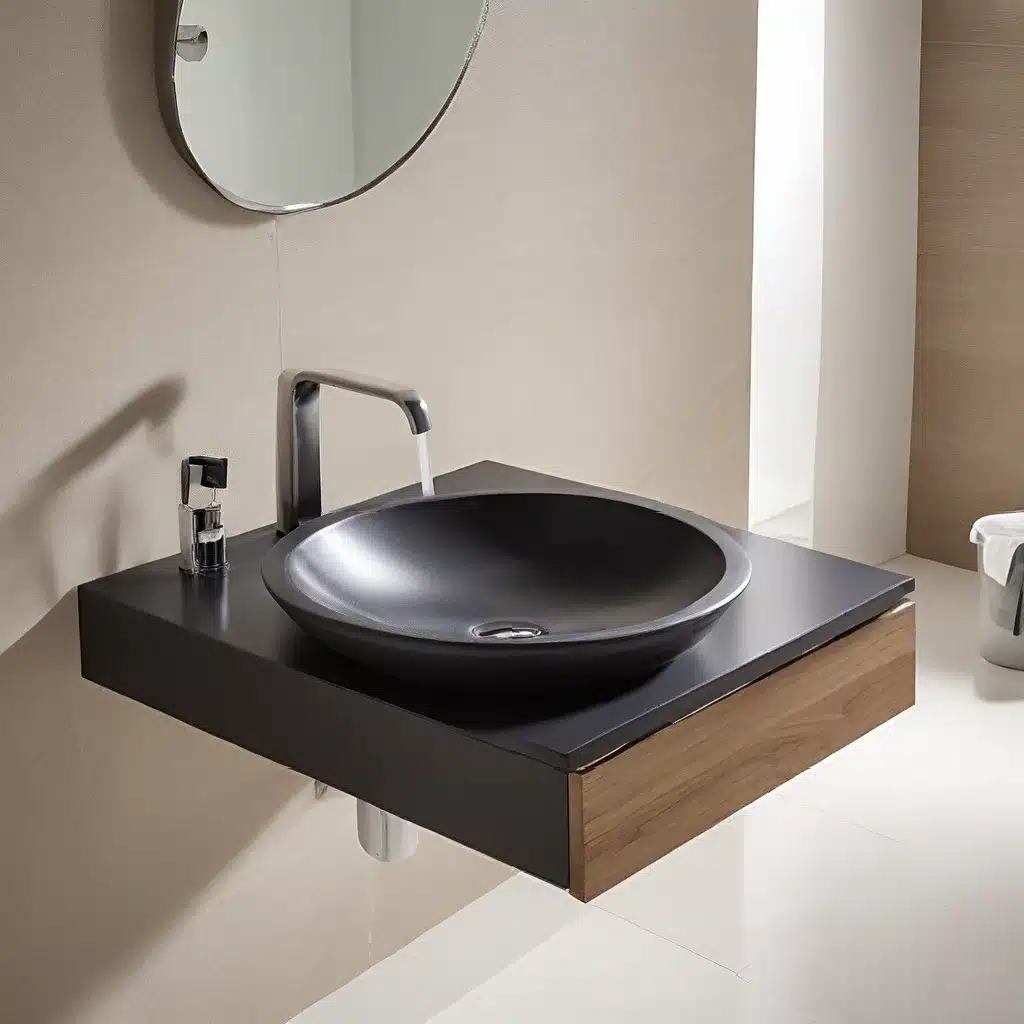
In an era of heightened environmental awareness, the bathroom has emerged as a prime battleground for water conservation efforts. As the world grapples with dwindling water resources, innovative washbasin designs have taken center stage, offering homeowners, designers, and facility managers a myriad of options to reduce water consumption without sacrificing style or functionality.
Breaking the Mold: Versatile Washbasin Designs
The traditional rectangular or oval washbasin has given way to a diverse array of innovative designs that cater to the unique needs and preferences of modern bathroom users. From sleek, wall-mounted options to space-saving, integrated sink systems, the washbasin landscape has been transformed, empowering individuals to make a tangible impact on their water usage.
One particularly noteworthy trend is the rise of compact washbasin designs, which are especially well-suited for smaller bathrooms or powder rooms. These diminutive marvels optimize every square inch of space while still providing a functional and visually appealing solution. Jeanine P., a Specifications Consultant at Geberit SA, notes, “How small can your washbasin be in a narrow bathroom? The answer may surprise you. Innovative designers have managed to create washbasins that are both stylish and space-efficient, catering to the needs of homeowners with limited square footage.”
Streamlining the Handwashing Experience
Beyond the washbasin itself, the handwashing process has also undergone a transformation, with integrated sink designs that combine the faucet, soap dispenser, and hand dryer into a single, strategically placed unit. This streamlined approach not only enhances the user experience but also promotes water conservation by minimizing the need for users to move around the bathroom.
The benefits of these integrated sink systems are particularly evident in high-traffic public restrooms, such as those found in airports, train stations, and other transportation hubs. As Butts, the product line manager for sinks, soap dispensers, and hand dryers at Sloan, explains, “Accommodating almost 75 million passengers in 2016, the Los Angeles International Airport (LAX) specified these integrated sink systems to help fast-track handwashing for travelers.”
Leveraging Sensor Technology for Efficiency
The shift towards water-saving bathroom fixtures has been further amplified by the widespread adoption of sensor-operated technology. From sensor-activated faucets and flushometers to touch-free soap dispensers and hand dryers, these innovative features help minimize water usage and reduce the spread of germs in high-traffic environments.
“Sensor-operated products of all types – especially flushometers – make sure the contents are evacuated after each use to keep them up and running,” explains Butts. “It’s not just restroom fixtures that are helping to move traffic in airports and train stations. No weary traveler wants to wait in line or maneuver in and out of a cramped stall with crowded restroom luggage or, worse, prop their luggage unattended outside their stall or near a urinal.”
Maintaining Water Efficiency: Predictive Maintenance and Smart Technology
As facility managers strive to optimize water usage in their bathrooms, predictive maintenance and smart technology have become invaluable tools. Innovations such as Bluetooth-enabled applications allow building owners and facility managers to collect data, adjust settings, and monitor water consumption without the need for hands-on work in the restroom.
“Thanks to Bluetooth technology, one such smartphone application enables building owners and facility managers to collect data and adjust settings without having to get under the sink or spend time working on the restroom floor,” Butts states. “As facility managers are given the ability to determine exactly how much water they can both save and utilize without sacrificing performance, this type of predictive maintenance helps transportation facility managers attain water savings with much better precision while offering users an efficient, high-quality restroom experience.”
Designing for Sustainability and the Traveler Experience
The focus on water conservation in bathroom design extends beyond just the fixtures themselves. Architects and designers are also considering the overall user experience, with features like walk-around privacy corners and larger stalls with outward-swinging doors to accommodate the needs of travelers and ensure a seamless, hygienic environment.
“Restrooms can be a breeding ground for germs, especially with thousands of people going in and out of them every day,” Butts notes. “The touch-free trend began with a focus on sensor-operated fixtures such as flushometers, faucets, soap dispensers, and hand dryers, yet users were still faced with the need to touch the restroom door upon exiting. The solution then became to use paper towels to open the door, but that only led to increased paper towel usage that would litter the restroom floor. To avoid those problems, designers are now adding walk-around privacy corners instead of doors.”
The Future of Water-Efficient Bathrooms
As the demand for sustainable and user-friendly bathroom designs continues to grow, the washbasin industry is poised to witness even more innovative solutions. From advanced water-recycling systems to self-cleaning technologies, the future of the bathroom is a testament to the ingenuity of designers, engineers, and facility managers who are committed to reducing water consumption without compromising on style or functionality.
One such innovation is the integration of dual-flush technology in high-traffic settings like the Los Angeles Union Station, where a recent retrofit has enabled the facility to reduce water usage by up to 30% in its bathrooms. “Innovative technology is now providing facility managers with low-flow, touch-free fixture options to save on both water and maintenance costs,” Butts affirms.
As homeowners, interior designers, and facility managers navigate the ever-evolving landscape of bathroom fixtures, the focus on water conservation remains a driving force. By embracing innovative washbasin designs, streamlined handwashing experiences, and smart technology, the bathroom of the future will not only serve its functional purpose but also contribute to the global effort to preserve our most precious resource – water.
Remember, for more information and to explore the wide range of water-efficient bathroom solutions, visit Washbasin Factory, where innovation and sustainability converge to elevate the bathroom experience.

